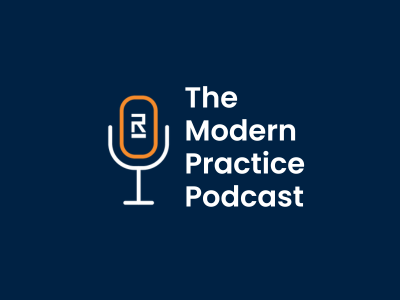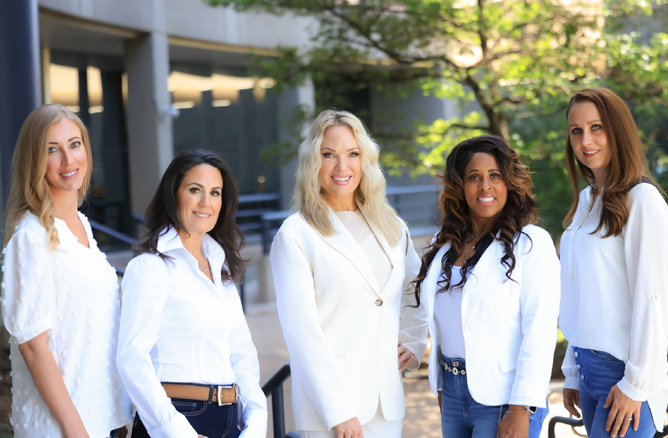On this episode of The Modern Practice Podcast, host Gary Tiratsuyan is joined by Rectangle Health’s Executive Vice President of Marketing, Michelle Dowling to discuss how healthcare practices can develop and maintain strong internal culture for a better patient experience.
Michelle draws from years of personal experience in leadership positions to share how practice owners and staff can align on core beliefs, feel safe and encouraged to have open dialogues, resolve conflict, and establish a positive work environment to grow and succeed as a practice.
Transcript
Gary Tiratsuyan: Hello, everybody, and welcome back to The Modern Practice podcast! Today we’re joined by Rectangle Health’s Executive Vice President of Marketing, Michelle Dowling, to discuss the importance of strengthening the internal culture at your practice for a better patient experience. Michelle, thank you so much for taking the time to join the show today!
Michelle Dowling: Thanks, Gary. I’m excited to be back.
The Importance of Culture in Healthcare Organizations
Gary Tiratsuyan: Michelle, let’s get right into it. And I want to start by talking about the importance of culture within an organization, specifically within a team. How important is it for a healthcare practice internally to establish a strong culture?
Michelle Dowling: Sure, Gary, this is a timely topic. I think it’s easy to take it for granted when a culture of an organization is already defined or existing. Today, however, I believe that we are redefining what that culture means, what that means to people, and how they interact in their day to day. In my opinion, it means that employees and managers understand what’s required of them and try to act in accordance with a company’s core values. It’s what I do every day and how I connect into what the company values most; and these beliefs, behaviors, and tradition, aid and creating what feels like a community. and shared values and living those values publicly is what is the foundation of a good culture. So how people treat one another, and how people can expect to be treated, all aligned to the values that everyone in the company shares. I think this is what we really mean when we say culture. And why it’s important is it’s the baseline for the employee experience, and what people feel like when they’re at work, if they feel safe enough to be the most productive at their jobs. So strong culture, in my mind, is essentially what attracts and retains talented people to join the team. What encourages a high level of employee engagement, which just means that they show up to work, they participate, they produce, and then is almost at an increased productivity, and results or outcomes as a result of a strong culture. Because it’s a healthy environment. And it actually serves to produce good service and experience. But I think most importantly, is it also provides a competitive advantage.
Gary Tiratsuyan: I love that last point, Michelle. “Creates a competitive advantage.” Because when I think about my own experience, be it in retail, healthcare, or wherever. the person or persons behind the desk are representing the company, specifically, when they’re happy, motivated, and excited to help, it permeates, and it draws me back to them. You know, products and services are available everywhere. But your experience with the people makes a huge difference. So, to that point, what would you say are the after-effects of not prioritizing a healthy, strong culture that starts from leadership and moves down?
The Effects of Poor Organizational Culture
Michelle Dowling: Sure. And if we’re honest, just like in years past, we’re spending so much more time at work than with our families. And now, the relationship between home and work is even more blurred, with a remote working environment being more commonplace. So today, I think people have very different expectations from their work day. I think that their balance is very different. And it’s driving change in how organizations operate efficiently. So, in contrast to what we just discussed as what was important and what builds a strong culture. I think the effects of no culture creates an environment where employees do not feel safe to participate or to speak up. There’s division and fear. There are high rates of absenteeism, often leading to job abandonment. I think we see that a lot in staffing challenges right now. And I think that lack of culture bleeds into how people feel outside of work, which affects their mental and emotional well-being. The after-effects are just as important and significant. People don’t just switch on and off when they get home from a bad day at an office. They don’t go from leaving a lot of things behind, there’s a residue and a residual effect that carries over. So from a negative workplace atmosphere, This was what leads to burnout and depression. And these are significant issues. And I think we see it more and more. high turnover costs the business affects the overall economy. So we need to work on and prioritize a positive work environment and well-being.
Gary Tiratsuyan: That’s so true, Michelle. I think about the impact of the internet; a healthcare patient, a consumer of any good or service, more so now than ever, is willing to leave a review on Google or a third-party site, a blog, or a social post. They share their experiences with the world. So my point is that a lack of culture bleeding into the home affecting mental health, anger, sadness, all these negative emotions having to come back into that workspace every day. It fuels and permeates in the opposite direction of the positive good culture, impacting the patients, and in turn, the business. So Michelle, I want to talk about staff and teams more in depth. Different personalities, different backgrounds, and individuals with a team have different person personal things going on. They also work differently, have different ways of coping with stress, and see things differently. So as a leader yourself, how do you navigate all of these differences?
Michelle Dowling: That’s a great question. And I think I feel very responsible for making sure that that positive environment is something that we focus on and that I constantly am fine-tuning; even when personal is on a personal note, I do something that I think I could have done better, it’s going back and trying to make it right. people are experiencing a very high level of stress for over a very long duration. And giving and having the outlet to say something like you said about leaving a comment or review really can go one of two ways, right ? can go positively or negatively. And as a leader, you really have to be paying attention to those reviews, to those remarks, and to your team. And as you said, Everyone is different. But if you’re watching closely, and are tuned in you can see when people do their best work and when they don’t. And when they’re doing their best, what are the conditions and when they’re not. What are those conditions? So one thing that I strongly believe in and do my best to create is a safe environment for people to show up and do their best work. And then to course correct when there are issues. Because it’s important to figure out what those stressors are on the individual and on the team.
And it’s being there to help people not navigate a constancy of change and unfamiliar challenges. I think that’s really describes the last few years, the leaders can help build a resilient team. Being a good leader as an encourager, whether it is to tell people to take a break or work remotely, if it’s possible, spend time with your family to take time off. And I think it’s important to model that behavior to and sometimes it’s even something to say like, do as I say, not as I do, because there are always different personalities and different work styles. But for me trying to resolve conflict through challenges or negative situations is only as good as people are willing to admit they’re facing a problem. And without that safe environment, without an environment that encourages that behavior, people are willing to address issues because they feel like it won’t do any good or can make things worse. So fostering an environment where it’s okay to have constructive conversations about roadblocks, frustrations, and negative behaviors, and then you need to act on it. And then, think about the culture you want to create and address it accordingly because it is in our power to create a tighter circle of communication.
Resolving Workplace Issues
Gary Tiratsuyan: Yeah, and I think that’s a perfect segue because I want to follow up that question up with, you know, in any work environment, considering those different personalities, tenure experience, etc. There may be some conflict. That’s a reality, right? People disagree, have differences of opinion and push their own very strongly. So how do you recommend resolving those issues in a healthy manner?
Michelle Dowling: Yes, Gary, navigating conflict is a critical aspect to both the workplace culture and of relationships overall. So it is a critical life skill. And often, I think we shy away from what we perceive as difficult conversations for a myriad of reasons. But what I’ve learned over time, and experience is to be the most direct and honest through careful and thoughtful delivery; it always wins. At the risk of sounding very simple. Active listening is the beginning of what I believe resolution can be people want to, and they deserve to be seen and heard. And there’s a saying that goes when passionate employees become quiet; it usually sends a signal to the work environment that has become very dysfunctional. So I always try to think about the people who are acting, participatory, and then communicating, and they’re, they’re sharing, and then when they go quiet, it makes me nervous. Because employees and people retreat into the patterns They create to protect themselves.
And in some cases, there are people who go the opposite way and express themselves very loudly. So what I found is to bring people together to work out their differences, through almost a mediation, can help resolve issues in a healthy way. So, for example, as a manager, I find myself often being on the receiving end of two different sides of the same issue. And what we always say, like there’s always a third side to that, but somewhere in the middle is the truth. But what I have found that works for my team and my experience is that we bring those people together, whether it be on a call or in person, and ensure that the understanding is that we’re going to talk through it by presenting both sides. And interestingly enough, I’ve seen it resolve itself quickly, just by having the space and the opportunity to vent and present their viewpoints and how it made them feel. So I think it all goes back to creating a safe place with no pre-judgment in a way for the issue to work itself out.
The Role of Empathy & Compassion in Culture
Gary Tiratsuyan: Externally, patient-facing at the practice, you know, compassion and empathy is evident. practices are out there to help people. But internally, what role does empathy and compassion play between colleagues and even the practice and the clinic owner?
Michelle Dowling: Right, I think the former president said it best, it’s the biggest deficit we have in our society is empathy. And we need people to put themselves in other shoes and see the world through their eyes. And it’s so easy to say. And I believe that oftentimes people harbor negative feelings, because they don’t have the ability to do that or don’t want to, because of the workload and the pressure that people are under. And without a concerted effort, we’ve become too busy to show empathy or compassion. And we’ve also become a little bit too defensive. And we need to challenge that. And I find this happens to me sometimes. And I think what I’m, what I tried to do is just take a step back and focus on the output. And the results, instead of really just thinking about what people are going through, and maybe capable of. So I try to think back on how to start with the person, and then think about the results. Because I think where we win is when we focus on people first, because then they create the best outcomes. So in contrast, when staff members treat each other with understanding and respect, it does it boosts morale, efficiency, and productivity, the team is more likely to provide each other with proactive support. And those employees that can tap into empathy, provide a more responsive patient, or Office experience, right? And it has to begin with leadership.
If employees don’t believe the leaders have empathy for them, they’re unlikely to show empathy themselves. So as a manager, as a leader, as a practice owner, as a physician, we have to find ways to show our team members support, and that we care about their well-being and their concerns. And it goes back to creating a culture that has values and understanding how it relates to others and how they connect with those values. But it also involves having some difficult conversations at times.
Final Thoughts
Gary Tiratsuyan: Yeah, that’s great advice. Michelle, thank you. Last question here. If we were to look at a dentist ophthalmologist, or vet, any provider really approached you right now, and said, What is my first step in transforming my practice culture for the better? And where would you recommend they start?
Michelle Dowling: I have one word, Gary, and it’s communicate. I think that communication is the most important aspect of how to begin to transform practice culture on both sides, right? not only just talking but listening. We’ll never be able to eliminate stress or create an environment that’s perfect. But people do want to be seen and validated. And appreciation goes a long way in turning around a negative situation. But it’s that combination of listening and talking, listening and opening up, taking a minute to step back, and listen with empathy. And I think that we also have to remind ourselves of the progress that we make on a daily basis, the bigger vision on how we contribute, and how every person’s role is vital to the success of that greater vision and of the organization. That’s a key part of managing stress in the workplace. I think people need to talk about what’s happening in each other’s lives, what’s happening at the office, and what can be done to make things better, but there are small steps that we can take in order to ease some of the stress. I highly recommend checking in with your employees, individually, to gauge how they’re feeling about their performance, and the workloads, and expectations, in that way you create that safe environment so that people can do their best work, communicating that you trust them, and care about their well-being creates that culture of empathy and being valued at the workplace.
Gary Tiratsuyan: Great advice, Michelle. Personally, when I think about great organizations or, you know, outside of the business world, like great sports teams, any group comprised of multiple team members, conversations, when they’re successful conversations always start with we. It’s forward motion in unison. And that takes, like you said, a high level of understanding empathy, compassion, knowing where people are in their personal lives, how to open up conversations and navigate differences, and build that belief and trust in one another. And that boils down to the strong culture, successful growing businesses have it. So I want to thank you so much, Michelle, for taking the time again to share your insights as a leader with us.
Michelle Dowling: Thanks for having me, Gary, these are such important issues for us to talk about. And I hope that any of these ideas or thoughts helps someone, manager or teammate or employee provide a way to manage a difficult situation or think about communication a little bit differently. That would be amazing.
Gary Tiratsuyan: Always a pleasure, Michelle, and I want to thank everyone for tuning in today. Be on the lookout for more episodes coming soon on team development and building strong organizational culture that leads to business success. Till next time, everybody.
Editor’s note: This interview has been edited for length and clarity.



